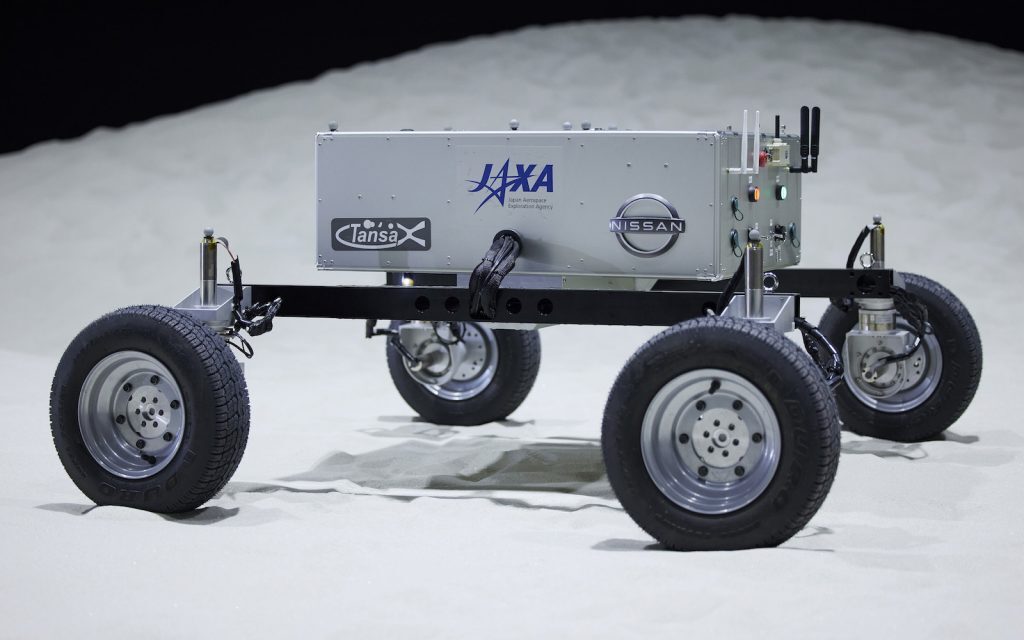Nissan has some serious future ambitions, aiming to turn its stable of vehicles largely electric by 2030. But its reach extends to the stars as well. Or, at least, to the lunar surface. The Japanese car company has revealed some work it’s doing with the Japan Aerospace Exploration Agency (JAXA), on an experimental lunar lander.
Appropriately for Nissan, the work it’s doing with JAXA has to do with wheels. Specifically, how wheels react to the lunar surface. It’s not quite like zooming down the N1. It’s more like driving a VW Beetle along the sands of the Skeleton Coast. Just with more dust and fewer sharks.
Nissan shoots for the moon
You might have encountered a hapless motorist who has opted to take their sedan on the beach. Often, you’ll find people camped around the driving wheels, digging holes in the sand large enough to jam cardboard, planks, or driftwood underneath. That’s because sand plus wheels quite often leads to a lack of traction. Well, on the moon, there’s nobody to dig in the dust when your lunar lander stops moving.
So Nissan is testing its new e-4orce driving tech in JAXA’s lander prototype. Designed for the company’s EVs, e-4orce is a form of precision all-wheel drive designed to react to specific conditions. One of those conditions is dry and dusty, like the lunar surface. This is where a spot of targeted response might come in handy. See, too much torque and you’ll spin, burying your wheels in the dust. Nissan’s e-4orce tech supposedly prevents that, which would be handy for efficient lunar exploration.
It’s also a handy promo for Nissan itself. The tech will turn up in actual cars as well, first in the Nissan Ariya. The featured model goes on sale in Japan sometime in 2022. Here on Earth, the tech works at conventional speeds, rather than the plodding pace a lunar lander will undertake. It also handles more than just dry, sandy conditions. It should improve handling across the board, promoting better grip by regulating torque to suit the current situation. Whatever that happens to be.




